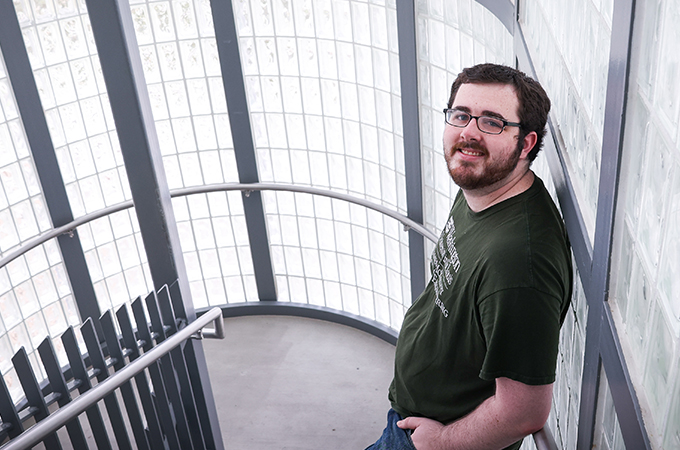When Jacob Griffin ’22 was deciding where to attend college, he was attracted to the University of Redlands Engineering 3-2 program because it offered the best of both worlds: commuting to a private liberal arts university and then moving to St. Louis, Missouri, to attend Washington University—broadening his horizons and earning two bachelor’s degrees in the process.
“I was interested in Redlands because it was a local school and the Engineering 3-2 program offered a set a path to Washington University,” he said. “That was really important to me.”
The product of an institutional partnership, the combined engineering degree program allows students to study at Redlands for three years followed by two years at either Washington University or Columbia University. Courses at the University of Redlands lay a foundation in the liberal arts, followed by specialized study at either of the two private research universities, ultimately producing knowledgeable, broad-thinking, and skilled engineers who are ready to launch careers in the field.
Building a strong foundation
Griffin, who pursued a computer science degree at Redlands and is working on a computer engineering degree at Washington University, knew he wanted to study engineering after joining the robotics club at his high school. In a game design class that was a part of his school’s Regional Occupation Program, he learned basic programming languages and used aspects of storytelling and mechanics to build a computer game. “Something just clicked,” he says.
At Redlands, he embraced interdisciplinary learning. He recalls changing his ideas about language in an English 102 class and talking about higher-level concepts of computer science, including project and time management, during his capstone course with Professor Trish Cornez. Taking advantage of a work-study opportunity in the University Communications department, he took the theories he was learning in class and tested them, leading to improvements on the Redlands.edu website in real-time.
Because he was a commuter student at a largely residential University, he was deliberate about cultivating a robust network of friends and colleagues. He regularly met up with fellow members of the Tabletop Club to play board games and played trombone in the University’s symphonic and jazz bands.
Even while living at home, he felt pulled toward the University of Redlands campus because of the community that existed there. “You get the feeling that people want to be there,” he says. “And I wanted to be there, too.”
Learning from industry leaders
Amidst the COVID-19 pandemic, Griffin embarked on a new journey when he moved to St. Louis to complete the latter half of his program. After choosing Washington University based on its merits—a community of over 1,200 students who are studying computing, a top-ranked embedded and real-time systems program, and experienced faculty members—he maintains the experience has lived up to his expectations.
“A lot of my professors have been industry leaders and constantly publish research about changes in the field of computer engineering,” says Griffin.
Due to the pandemic, courses were offered in an online format, resulting in an unusual first year in the program. But Griffin wasn’t discouraged—he sees unique value in the experience. Recently, his computer engineering assignments have grown in complexity and involvement, requiring more planning and attention.
At the same time, he has had to balance supplemental reading and tasks while also learning to navigate the public transit system, buying groceries, and practicing trombone. Griffin also took the opportunity to join Washington University’s jazz band—whose members made music together virtually during the pandemic—which has given him a fun outlet to meet people.
Academics and logistics aside, Griffin notes that the 3-2 program has helped him imagine a future career in computer programming. In a recent semester-long project for a user interface course, he was required to conduct interviews to determine users’ needs, create mock designs of the platform, and run tests to make sure it operated correctly—all tasks that are regularly required of professional programmers.
“Solving a problem through programming is really satisfying,” Griffin says. “The bigger projects show me that I can do it—they’re what I will encounter on the job but on a smaller scale. A lot of the skills needed to get and keep a job in the industry directly transfer from what I’m learning.”
Learn more about the Engineering 3-2 program at the University of Redlands.






